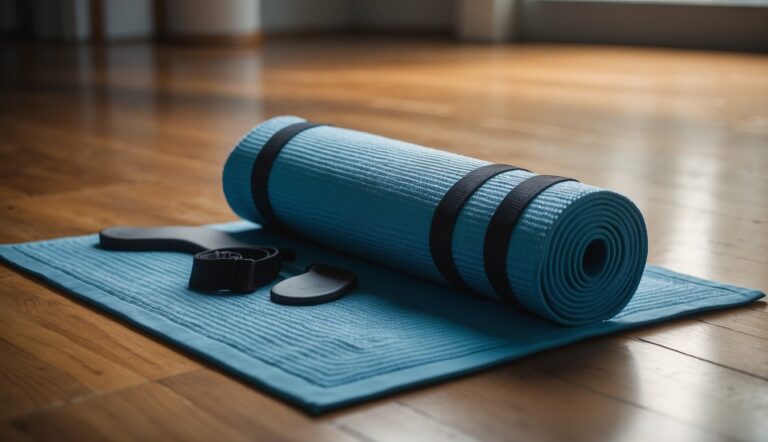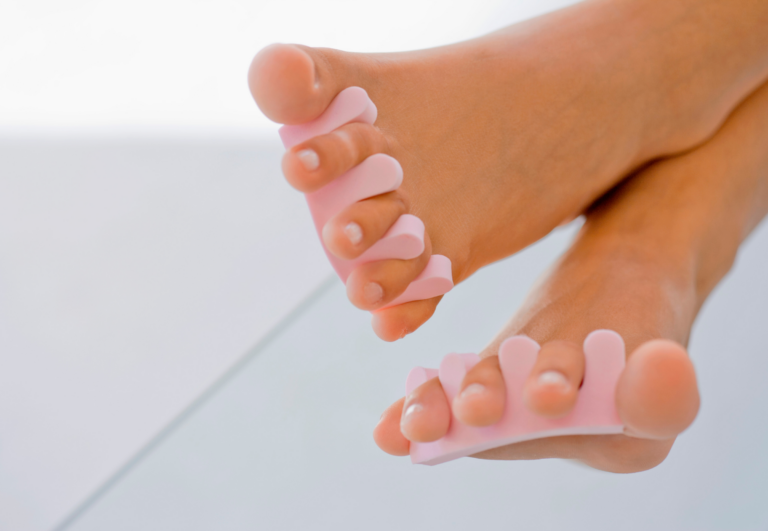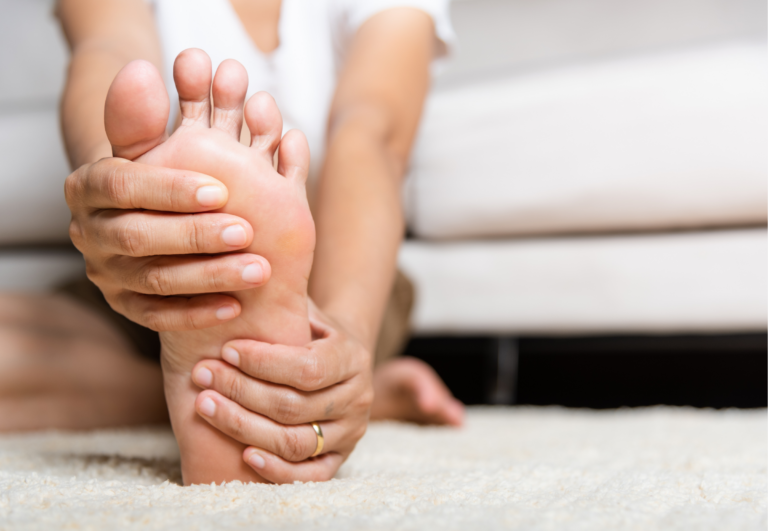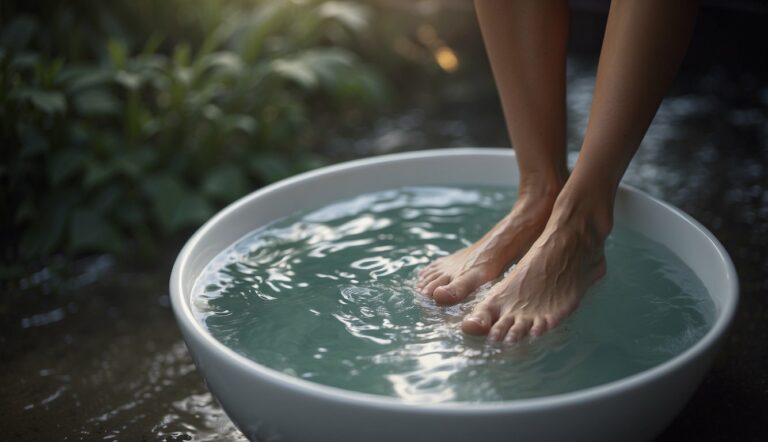Products To Help with Plantar Fasciitis: Top Picks for Relief and Support
Plantar fasciitis is a common condition that causes heel pain and foot discomfort, typically felt as a sharp stab or a dull ache. As someone who’s well-acquainted with toe spacers and their benefits, I understand how foot pain can impact daily activities. This condition stems from inflammation of the plantar fascia, the thick band of tissue running across the bottom of your foot and connecting your heel bone to your toes.
Symptoms often include a flare-up of pain that usually hits with your first steps in the morning or after long periods of standing. I’ve learned that mitigating this discomfort requires products that support the foot and reduce strain on the plantar fascia. From slippers specifically designed for plantar fasciitis relief to orthotic insoles that provide extra cushioning, there are various products that can help alleviate the pain.
Finding the right product involves considering effectiveness, material quality, and how well it fits into your daily routine. I prefer to recommend options that have received positive feedback for providing significant relief. Nonsteroidal anti-inflammatory drugs (NSAIDs) may also be considered for managing inflammation and pain, but I always suggest consulting with a healthcare professional before starting any new treatment.
What Causes Plantar Fasciitis?
Plantar fasciitis is often characterized by a sharp heel pain. My goal here is to explain its key aspects based on my experience with foot care and toe separation.
Symptoms and Diagnosis
Symptoms: The hallmark sign of plantar fasciitis is a stabbing pain in the bottom of your heel. This discomfort is usually worse with the first steps after waking up, although it can also be triggered by long periods of standing or when getting up from a seated position.
Diagnosis: When you visit a healthcare provider, they will conduct a thorough medical history review and physical examination. They may check for tenderness in your heel and the stiffness of your arches to help confirm a diagnosis of plantar fasciitis. Typically, imaging tests are not necessary unless there is suspicion of a stress fracture or another condition.
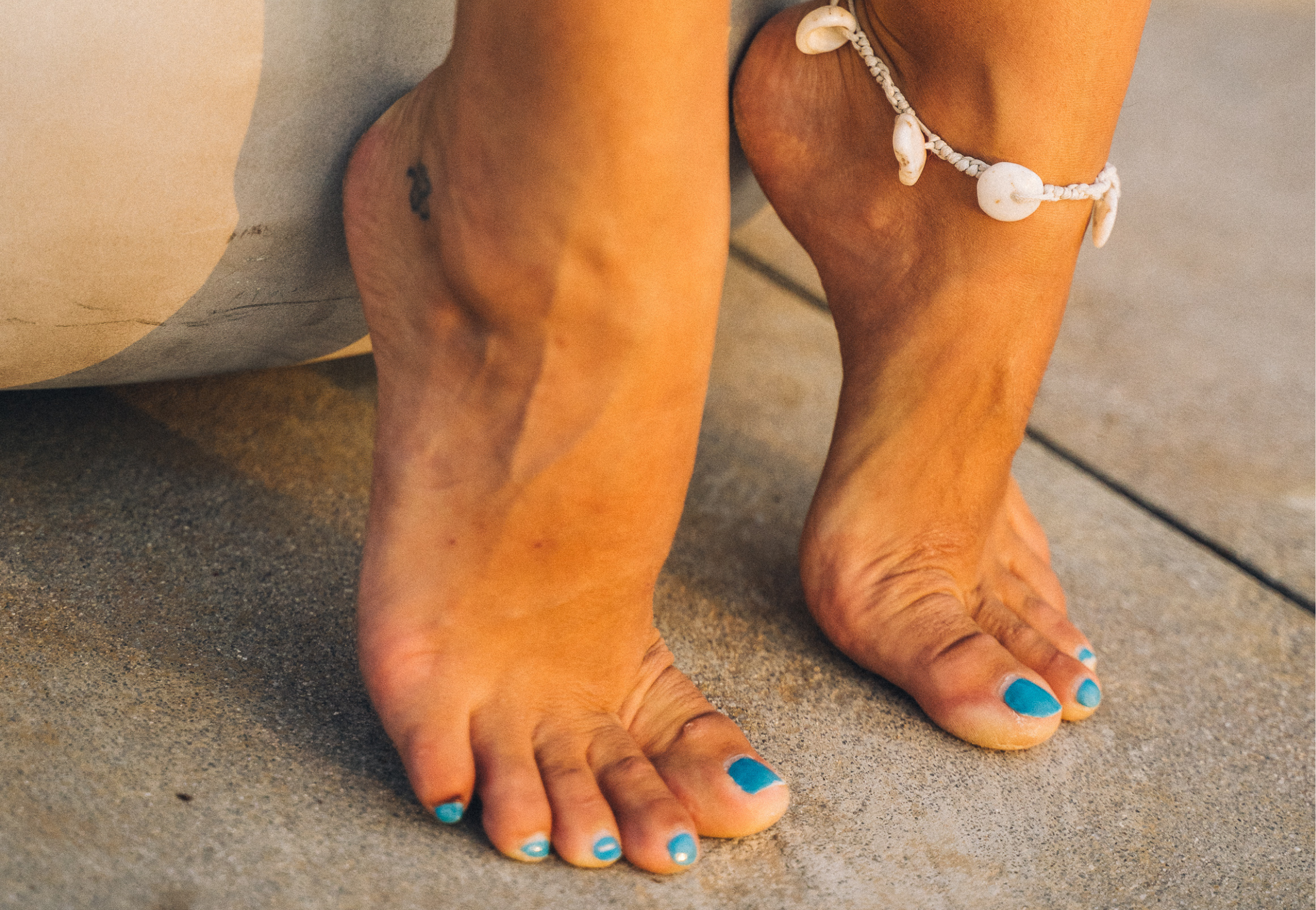
Contributing Factors and Prevention
Contributing Factors:
- Foot Mechanics: Flat feet, a high arch, or abnormal walking patterns can affect the way weight is distributed when you stand and can put added stress on the plantar fascia.
- Occupation: Jobs that keep you on your feet for extended periods may contribute to plantar fasciitis.
- Exercise: Activities like long-distance running, ballistic jumping activities, ballet dancing, and other such exercises that put a lot of stress on the heel and attached tissue can increase the risk of plantar fasciitis.
Prevention:
- Footwear: Choose shoes with proper arch support and cushioning.
- Stretching: Regular stretching of the Achilles tendon and plantar fascia can improve and maintain their flexibility, which can reduce the strain on your heel.
- Weight Management: Maintaining a healthy weight minimizes the stress on your plantar fascia.
- Rest: Ensure adequate rest, especially after activities known to exacerbate heel pain.
Effective Treatments and Therapies for Plantar Fasciitis
Plantar fasciitis can cause significant heel pain, hindering daily activities. Understanding and applying the right treatments and therapies promptly can aid in alleviating discomfort and facilitating recovery.
Conservative Treatments
For many, plantar fasciitis can be managed effectively with conservative treatments. Options include:
- Rest: Avoiding activities that exacerbate pain.
- Ice: Applying ice to the affected area to reduce inflammation.
- Stretch: Performing stretches specifically for the plantar fascia and Achilles tendon.
Medications and Injections
When pain persists despite conservative measures, the following treatments may be considered:
- NSAIDs: Over-the-counter medications such as ibuprofen or naproxen to reduce inflammation and pain.
- Steroid Injections: These may be administered by a healthcare professional to decrease inflammation, typically as a last resort when other treatments have failed to provide relief.
Physical Therapy and Stretching
Directed exercise and stretching form a cornerstone of plantar fasciitis management, with a focus on:
- Physical Therapy: Structured programs that include exercises to strengthen the plantar fascia, Achilles tendon, and lower leg muscles.
- Stretch: Daily exercises to stretch the plantar fascia and Achilles tendon for flexibility and pain reduction.
Footwear and Support Products
When managing plantar fasciitis, the right footwear and support products are critical. They provide essential relief and stability, addressing the condition at its core.
Choosing the Right Shoes
My experience has taught me that quality running shoes with ample cushioning can make a significant difference for those with plantar fasciitis. Shoes like the Asics Gel-Kayano with a 10 mm heel drop and FF Blast foam can offer the necessary heel and arch support to alleviate pressure on the plantar fascia. Similarly, the New Balance Fresh Foam and Brooks Ghost series have been recognized for their supportive design.
- Supportive shoes should have:
- Sufficient cushioning for shock absorption.
- A design that provides stability and a good fit.
- A moderate heel to alleviate pressure.
Insoles and Orthotics
Insoles and orthotics are game changers in providing additional support inside your shoes. Over-the-counter options such as the Superfeet Green Insoles offer structured heel cups and a foundation that may benefit those with plantar fasciitis. For those requiring tailored support, custom orthotics may be the answer.
- Supportive insoles:
- Should match the contours of your feet.
- Provide extra cushioning where necessary.
Additional Supportive Devices
Aside from footwear and insoles, other products like heel cups and night splints can play supportive roles. Heel cups enhance the cushioning in the heel area, while splints keep the foot in a dorsiflexed position during sleep to aid the healing process of the plantar fascia.
- Common supportive devices include:
- Heel cups for additional heel cushioning.
- Splints to maintain the correct positioning of the foot.
Lifestyle and Home Remedies
In managing plantar fasciitis, incorporating specific lifestyle adaptations and home care routines can make a world of difference in easing pain and improving foot health.
Daily Activities and Exercise
Through my experience with toe spacers, I have found that modifying daily activities contributes significantly to plantar fasciitis recovery. It’s essential to:
- Avoid excessive running and walking, especially on hard surfaces.
- Choose shoes with good arch support and cushioning.
- Incorporate low-impact exercises like swimming or cycling to maintain fitness without putting extra stress on the feet.
Exercise regimen is also critical. Regular foot-specific exercises can promote healing by improving strength and flexibility. I recommend:
- Calf stretches against a wall several times a day to increase flexibility.
- Towel stretches first thing in the morning by pulling on a rolled towel with the toes.
- Toe stretches using toe spacers to improve toe alignment and stretch the plantar fascia.
Massage and Home Care
Implementing simple home care strategies helps alleviate discomfort. Here’s what has worked for me:
- Self-massage with a massage ball can be incredibly relieving. Roll the foot arch over a firm massage ball gently to loosen the tight fascia.
- Ice therapy is effective for reducing inflammation. A frozen gel pack wrapped in a cloth and applied to the sole of the foot for 15-20 minutes can provide relief.
I use a warm bath with Epsom salt to soothe the feet after a long day too. It’s important to give your feet a break and allow them to recover. Remember that improvement can take time, and consistency with these lifestyle and home remedies is key.
When to Consult a Professional
My experience with toe spacers has shown me that while they offer relief, there are times when professional help is necessary. Recognizing when to seek the expertise of a podiatrist can be crucial, especially if home remedies and self-care strategies don’t alleviate your plantar fasciitis symptoms.
Seeing a Podiatrist
If you’ve been running, participating in sports, or leading an active lifestyle and you experience persistent heel pain, it might be time to consult a podiatrist. When:
- The pain continues for more than a week despite rest and self-care.
- You have significant heel pain that limits your daily activities.
A podiatrist, a specialist in foot conditions, can provide a comprehensive assessment and recommend treatments like a support boot or a custom orthotic which could be more effective than toe spacers alone.
Considering Surgery
Surgery is generally the last resort for treating plantar fasciitis, and it typically comes into play when the following criteria are met:
- Conservative treatments such as stretching, orthotics, and physical therapy have been tried for 6 to 12 months without significant improvement.
- The pain is severe enough to interfere with your normal functions and quality of life.
A podiatrist or sports medicine professional can assess if you’re a candidate for surgery. Consulting these professionals ensures you’re getting advice tailored to your specific situation.
